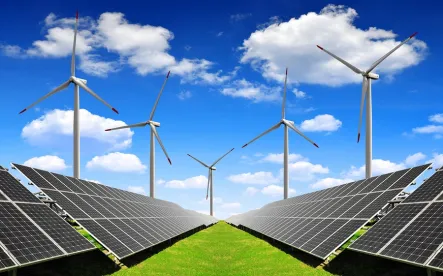Renewable energy project developers utilizing federal tax credits will likely get more time to complete work on projects. While more formal guidance is forthcoming, the renewables industry may see an extension of the safe harbor from four to five years for projects that began construction in 2016 or 2017.
IN DEPTH
In a letter sent on May 7, the Office of Legislative Affairs at the Department of the Treasury (Treasury) issued a letter to Charles Grassley, the chairman of the Senate Committee on Finance, stating that Treasury intends to issue relief to the wind and solar industries regarding certain production tax credit (PTC) and investment tax credit (ITC) deadlines.
The letter is in response to Grassley’s April 23, 2020, letter to Treasury requesting that the four-year safe harbor for the continuous construction and continuous efforts test for the PTC and ITC be extended to a five-year safe harbor period. The rule changes were requested due to the project disruptions caused by the COVID-19 pandemic.
According to Grassley, “Projects that have been waylaid by the economic disruptions of this pandemic can now proceed with more certainty. That means more certainty for American businesses and families at a time when stability is in short supply.” (See https://www.grassley.senate.gov/news/news-releases/treasury-modify-guidance-energy-production-investment-tax-credits-light-health)
Per the current IRS rules, taxpayers can claim the PTC for electricity produced or the ITC for qualifying energy property if either: (a) significant physical work is started on the project or (b) 5% or more of the total cost of the project is paid or incurred, and in the case of both (a) and (b), the project is placed in service within four years. If the project is not placed in service within four years, the taxpayer must instead demonstrate continuous progress on the project since the time (a) or (b) was satisfied – a standard many taxpayers are struggling with following unexpected manufacturing and other delays in 2020. The scope and timing of the Treasury relief is still unknown, but taxpayers are optimistic it will follow the suggestions in Grassley’s letter. The requested rule change would allow renewable energy projects that began construction in 2016 and 2017 to be completed in five years, rather than the four years allotted under current Treasury regulations. Ideally, the extension will be automatic for any project that otherwise began construction in 2016 or 2017, and not be tied to whether the delay is related to COVID-19. Otherwise, taxpayers will be left with the challenge of determining whether a project delay is related to COVID-19. While some delays (such as manufacturing and supply chain delays) can be clearly traced to COVID-19, other delays are more indirect. For instance, projects that completed physical work in 2016 or 2017 may have voluntarily stopped construction upon notice of a potential force majeure delay, even if the project might still have been placed in service in 2020 on the chance equipment is timely delivered in 2020. Given the complexity and questions surrounding each project’s particular facts, the safe harbor extension should apply to all projects.
Ultimately, the Treasury relief is welcomed by the renewable energy industry. This rule change could prove critical to the industry in light of the fact that many projects are facing significant delays and setbacks due to disrupted supply chains, construction delays, missed permitting timelines and other related delays.







 />i
/>i

